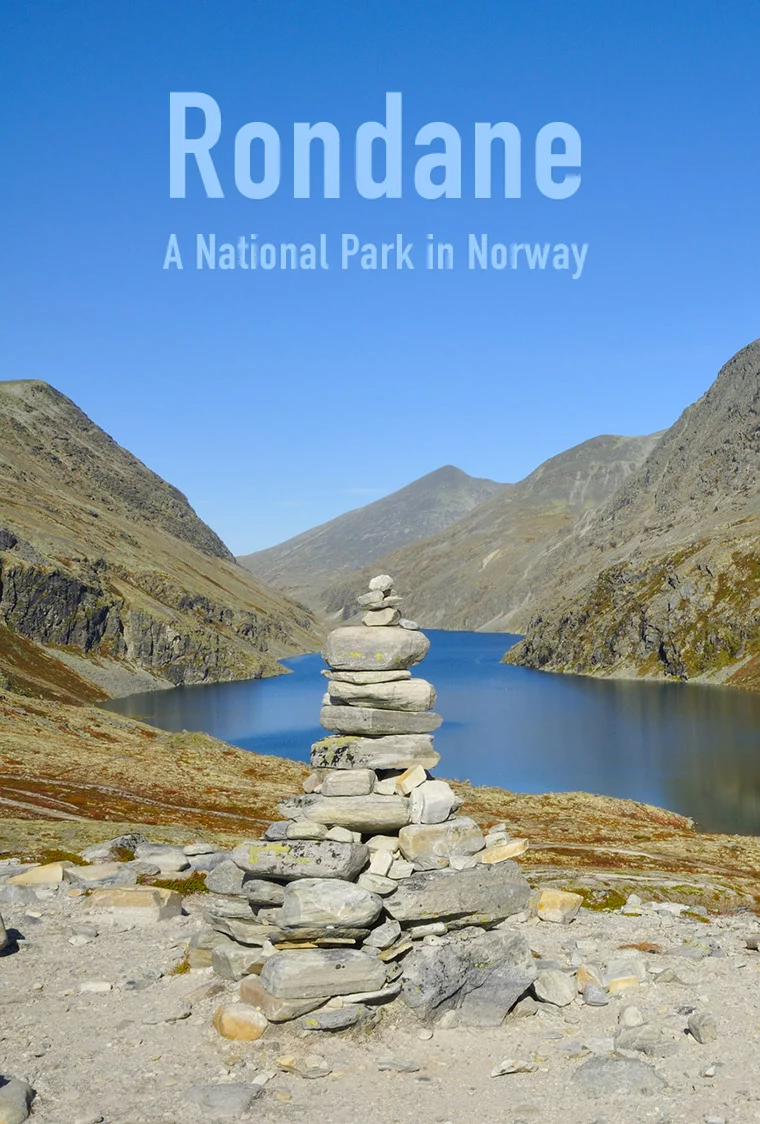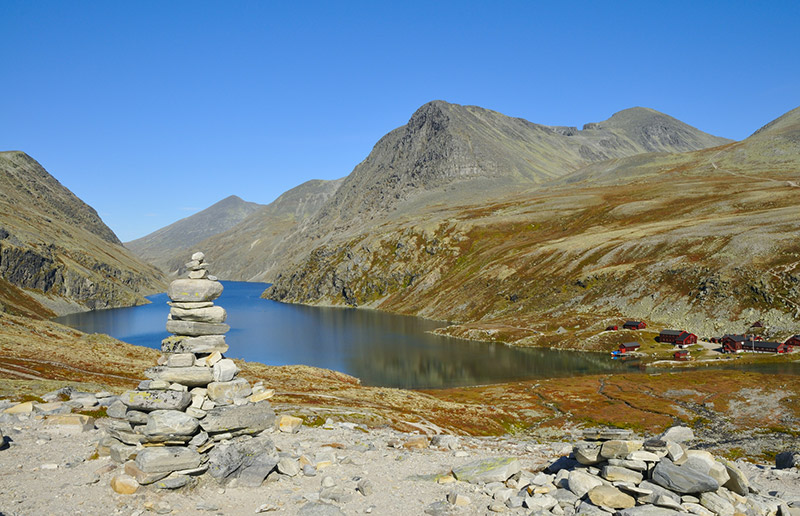
Tall mountains, wild reindeer and one of Norway's scenic road trips await visitors to Rondane National Park. Here's what you need to know to help plan a visit.
Why visit Rondane? Many Norwegians return here year after year. It's inspired countless artists over the years. The landscape is ideal for a hiking vacation. Read on and see for yourself what makes Norway's first national park so special.
Introducing Rondane
Similar to the neighboring Dovrefjell-Sunndalsfjella National Park, the Rondane National Park is mountainous. Ten of its peaks tower higher than 2,000 meters (6,000 feet). The highest, Rondeslottet, clocks in at 2,178 meters (7,146 feet).
Even so, the peaks may not appear as dramatic as you expect because even at the lowest point in the park, you are at least 1,000 meters (3,300 feet) above sea level.
Read more: Jotunheimen National Park
The park is characterized by the large number of kettle holes caused by the remains of Ice Age glaciers. Birch forests and lakes give the national park a different feel from many of the others nearby.
Above the tree line, poor soil means vegetation is limited to moss and the occasional shrub. It's also an important natural habitat for wild reindeer, so keep your eyes peeled!
A Rondane road trip
South of the Dovrefjell mountains, you will skirt the western side of Rondane on the E6 highway or on the Oslo to Trondheim railway line.
There’s plenty to see from the roadside. But, to get a closer look in the car, take a detour on your trip away from the E6 at Ringebu (traveling north) or Hjerkinn (traveling south). Here you'll find onto route 27, a 64km-long road that skirts the eastern perimeter of the park. It's one of Norway's best road trips.
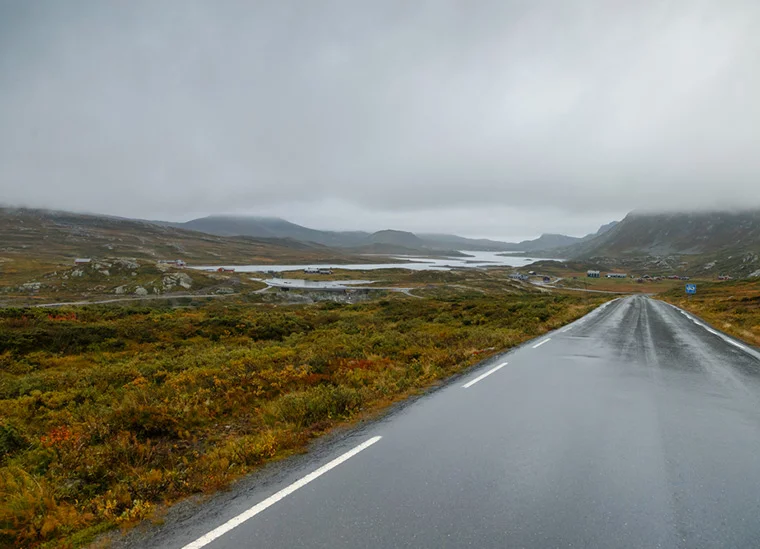
As one of the 18 designated Norwegian scenic routes, the road has benefited from significant investment. This means there's plenty of rest stops, interesting viewpoints and, yes, restrooms! Here are some of the points to look out for along or close to the route.
Sollia church
Just a few miles off Route 27 along Route 219 is the quaint Sollia church. It was built in 1738 by locals fed up with making the arduous trek along the mountains to the closest church at Ringebu. They received no funding for the construction.
The timber church with its painting-filled interior has been wonderfully preserved. It’s usually only open for services, but you can call ahead to arrange a viewing. Check the website if you're visiting in the high summer season as it may be open for a few hours daily.
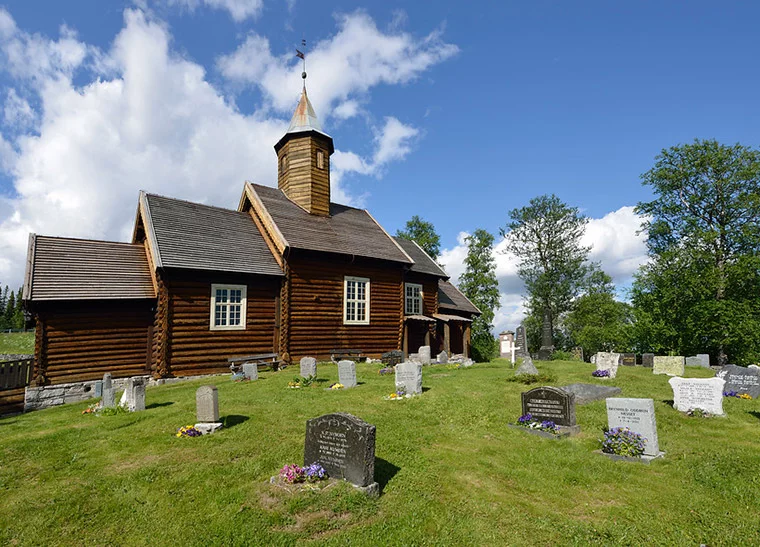
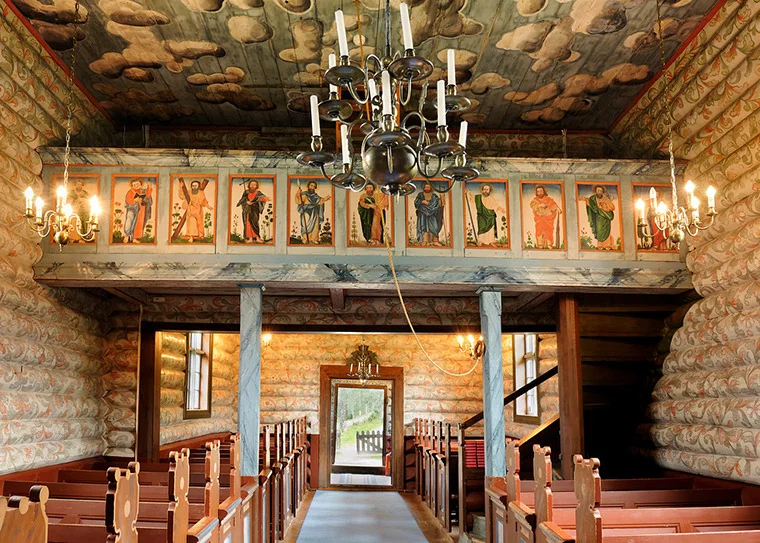
Other places to stop
North along Route 27, 20 kilometers (12.5 miles) away from the church, is the Atnabrufossen Waterworks Museum. This is another worthy stop regardless of your interest in the subject matter.
Located in a birch grove beside a gushing river, the area makes a fine place for a picnic or to simply stretch your legs. The former sawmill and hydropower station is only open for exhibitions, so this stop is mostly for the beautiful surroundings.
Just a couple of miles farther north along Route 27, the architecture of the modern lakeside viewing point Sohlbergplassen is typical of the modern rest stops constructed along the Norwegian Scenic Routes. The snowcapped peaks of Rondane make a spectacular backdrop to this ideal picnic spot.
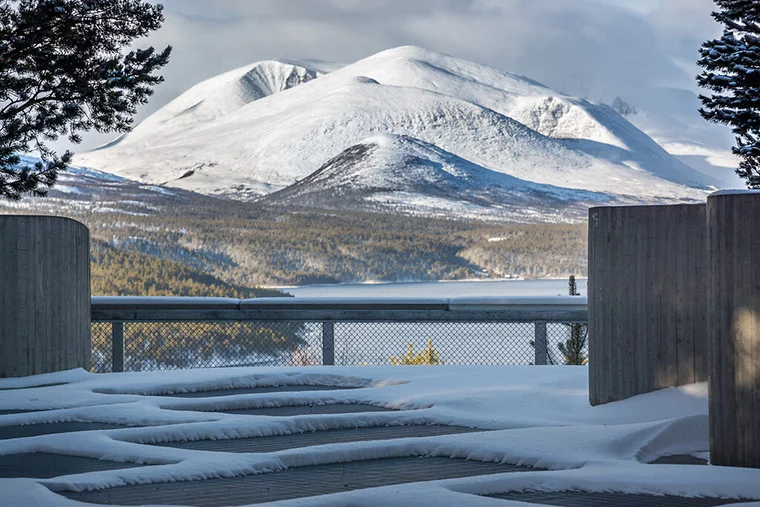
Built to curve around the pine trees rather than interfere with them, the platform beautifully frames the view across the Atnsjøen lake. The viewpoint provides the angle made famous in Harald Sohlberg's 1914 painting ‘Winter Night in the Mountains'.
The Strømbu rest stop is one of the main gateways to the mountains, so is a good starting point for hikes. For drivers, the restroom building has a roof terrace overlooking a river. Note that the toilet facilities are closed from the end of October to Easter every year.
Finally, the industrial heritage site of the Folldal mines feature 70 well preserved buildings. In operation from 1748 to 1993, the mines produced copper, zinc and sulphur.
The popular mountain lodge
During the summer months, most hikers head for DNT’s Rondvassbu mountain lodge at the southern tip of Rondvatnet lake. Open to DNT members only, the cabin has 128 beds and is accessible with a straightforward but lengthy 1.5-hour hike from the car park at Sprangen.
During the winter season, there is a marked cross-country ski trail. Be aware that the lodge and many of the hiking routes across Rondane are closed from May to early June because of the reindeer calving season. The lodge is staffed during Easter and after the calving season has finished through to late September.
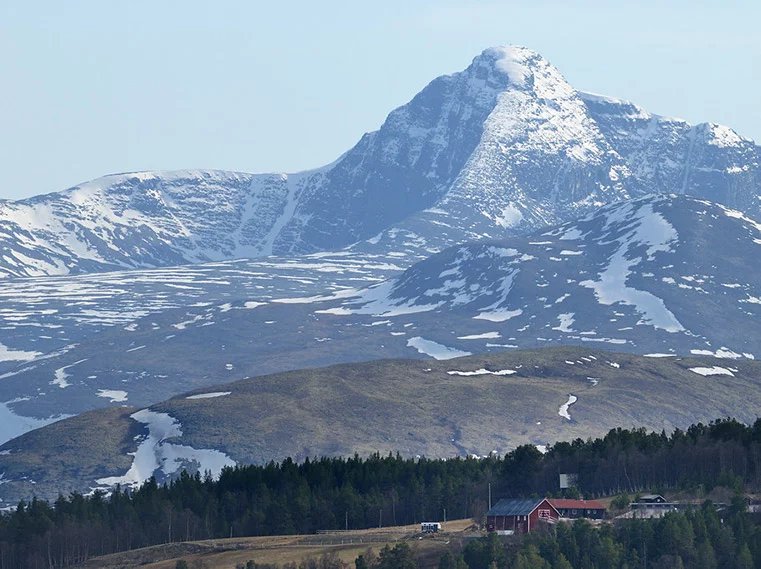
To reach the Sprangen parking lot, travel to Otta, which is 46 kilometers (29 miles) south of Dombås along the E6 or a 30-minute train ride. From Otta, take Route 444 to Mysusæter and follow the signs.
If you are without your own transport, public bus 538 runs from the transport interchange in Otta (Otta skysstasjon) to the Spranget lot three times a day during July and August. The journey takes 50 minutes. Check www.opplandstrafikk.no for schedule and fare information.
Other hiking and outdoor activities
A popular cycle route starts up on Venabygdsfjellet. After the descent down to the valley, you could choose to continue on an additional 24km to Sollia church. From here, a cycle route continues through the long Atndalen valley. The route is relatively easy both ways and car traffic is usually light-to-moderate.
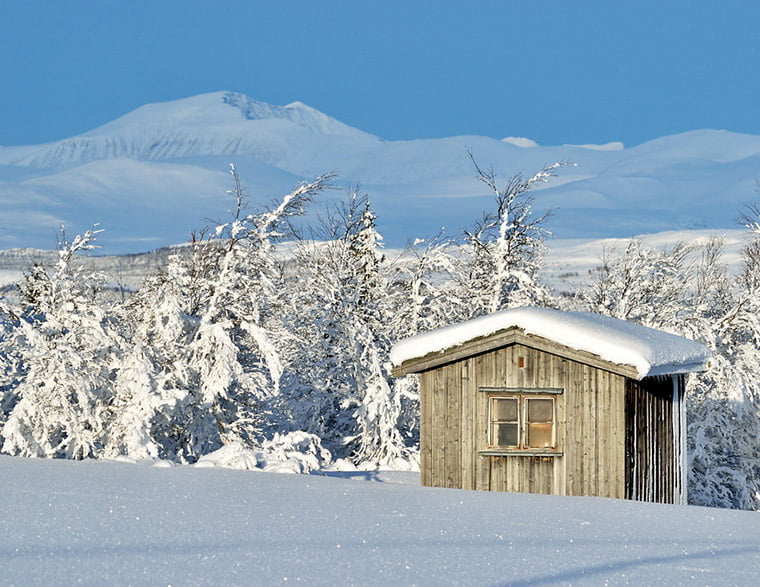
From Rondvassbu, many hiking opportunities are available, including to the summit of Storronden. Allow around five hours to negotiate the challenging round-trip on the clearly signed trail.
During July and August, a boat trip runs 2-3 times a day from the lodge along the length of Rondvatnet lake. The one-way journey takes just 15 minutes and costs 120kr. The walk back along the lake’s western shoreline takes around 2.5 hours, or you can return immediately on the boat.
From Strømbu, the trail to the Bjørnhollia lodge winds through birch woods and pine flatlands with the occasional great view of the mountains. From Bjørnhollia, many trails lead into sheltered valley of Skjerdalen.
More info
For specific information on accommodations and hiking options, the unstaffed Dombås National Park Centre (Dombås Nasjonalparksenter) in Dombås has specific information about Rondane.
Did you enjoy this trip through Norway's Rondane National Park? If so, why not share it on Pinterest so others can find it too? Here's the perfect pin:
